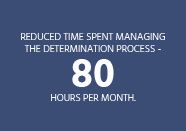Blog

Cambios En El Impuesto A Las Ventas De Puerto Rico – Lo Que Los Contribuyentes Necesitan Saber Para Mantenerse Al Día Also View in: Por efecto de la aprobación de las leyes 40 y 117 del 2013, y las leyes 18, 19 y 80 del 2014, el impuesto a las ventas y uso que aplica […]
Three Types of Indirect Taxation in India Understanding international indirect tax requirements can be daunting, especially for companies who are new to doing business in a country. India is one country that is particularly challenging because not only are there several federal level indirect taxes on both goods and services, but there are also state […]
With Chile’s electronic invoicing mandates set to take effect in only a few short months, it is important to understand that your solution selection criteria should include more than just the DTE connectivity. If you don’t understand how you will meet the 7 requirements for “Readiness” through the SII website, you could find yourself with […]
It is not all about risk when dealing with Latin America Compliance. We still need to remember that there are huge profit potentials in this ever growing region and business will continue to expand. As you do focus on Latin America growth, it is true that compliance is something that needs to be managed. […]
The good news is that many multinationals have realized that Enough is Enough and have moved or are moving away from a strategy that requires continuous changes to their ERP system to support the constantly changing Nota Fiscal requirements in Brazil The Bad News is that there are still too many IT Execs who […]
With the changes in Brazil set to take effect in December of 2014 and Chile mandates coming even earlier – November 2014, don’t forget about the other mandated countries – specifically Argentina. There are currently more than 300,000 companies that were mandated to transition to electronic invoicing between April and August of 2014 and […]
The tax reform in China that replaces Business Tax with Value Added Tax (B2V) for the service industry continues to build momentum. A pilot program to apply Value Added Tax (VAT) to designated service sectors began on January 1, 2012 and has been expanding its scope ever since. As mentioned in a previous article, “China’s VAT Reform“, […]
I wanted to give a quick update on the Manifestação do Destinatário business process in Brazil as there have been a lot of questions lately on the topic. For many companies, this is now becoming mandatory. As one example, the legislation has been defined by the the states – both Rio Grande del Sul and […]
If you missed our Webinar on Indirect taxes in Brazil, you can view the recorded webinar at http://lnkd.in/dNyEmWi. When traveling internationally, it is imperative to research your destination prior to departure. The same is true for those planning to conduct business internationally. Are you aware of the complex sales and use tax implications of doing […]
Electronic invoicing in Latin America is not just about operational issues, it is about risk and financial exposure. Recently, Citigroup, Inc. announced that fraudulent invoices in their Mexico operation forced the company to adjust their 2013 profits by $235 million dollars.
When I mention Nota Fiscal, companies are often looking at the Account Receivable side of the operations due to the impact on Shipping and customer payments. However, there are many advantages that should and can be obtained in the Procure to Pay process. Often organizations explain to our teams that inbound validation is still manual. […]
In Mexico, many organizations implemented non-integrated solutions provided by local signature providers. Now after the first 3 months, the problems we were alluding to are starting to show up. In my previous blog, I wrote about the complexity of Addenda which continue to take on new forms of complexity. Today, I want to go back […]
Over 500,000 organizations rushed to get solutions in place by the January 1, 2014 electronic invoicing deadlines in Mexico. Now after the first 3 months, the problems we were expecting companies to experience who chose the lowest cost local solutions are starting to show up. (FYI – Our customers are doing great.) For this blog, […]
The Chile SII officially published the electronic invoicing mandate in the Official Gazette, mandatory use of the Electronic Tax Document (DTE). The rollout will take place over 3 years and will be based on revenue tiers.
Eventhough the latest NFe 3.1 deadline is approaching, there are still a lot of companies that don’t fully understand the required upgrades in Brazil. So in short, here is a quick overview of 3.10 requirements as well as what we are seeing from project length and staffing.